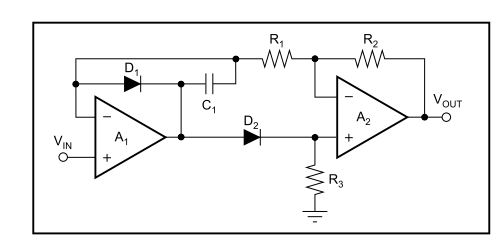I did some soldering and breadboarding and implemented the precision rectifier circuit as presented in 
which was taken from an Burr-Brown Application note sboa068.
R1, R2 and R3 are all 10k, the Opamp chosen was an AD8602 and the Diodes chosen were BAT54 (due to the lack of better-suited diodes at the moment)
The opamps are powered by a split power supply of +/-2.5V and I feed a sinusoidal input signal to the circuit while having a scope on the output.
I use a input signal amplitude of 1Vpp and vary the frequency from about 10kHz to 200kHz. Unfortunately, I see a large variation in the output amplitude of the rectified signal.
When feeding 30kHz, i have an output amplitude of about 400mV instead of 500mV, then when increasing the frequency to about 50kHz I get the correct amplitude of 500mV Peak, when further increasing the frequency to 200kHz, I get an amplitude of about 710mV. I measured the resistirs R1 and R2, which have 10.016k and 10.011k respectively, so that cannot explain such a large variation in "gain".
According to a LTSpice simulation with the correct spice models, the circuit works rather fine down to about 80mVpp, where amplitude starts to fall off.
Any suggestions?
